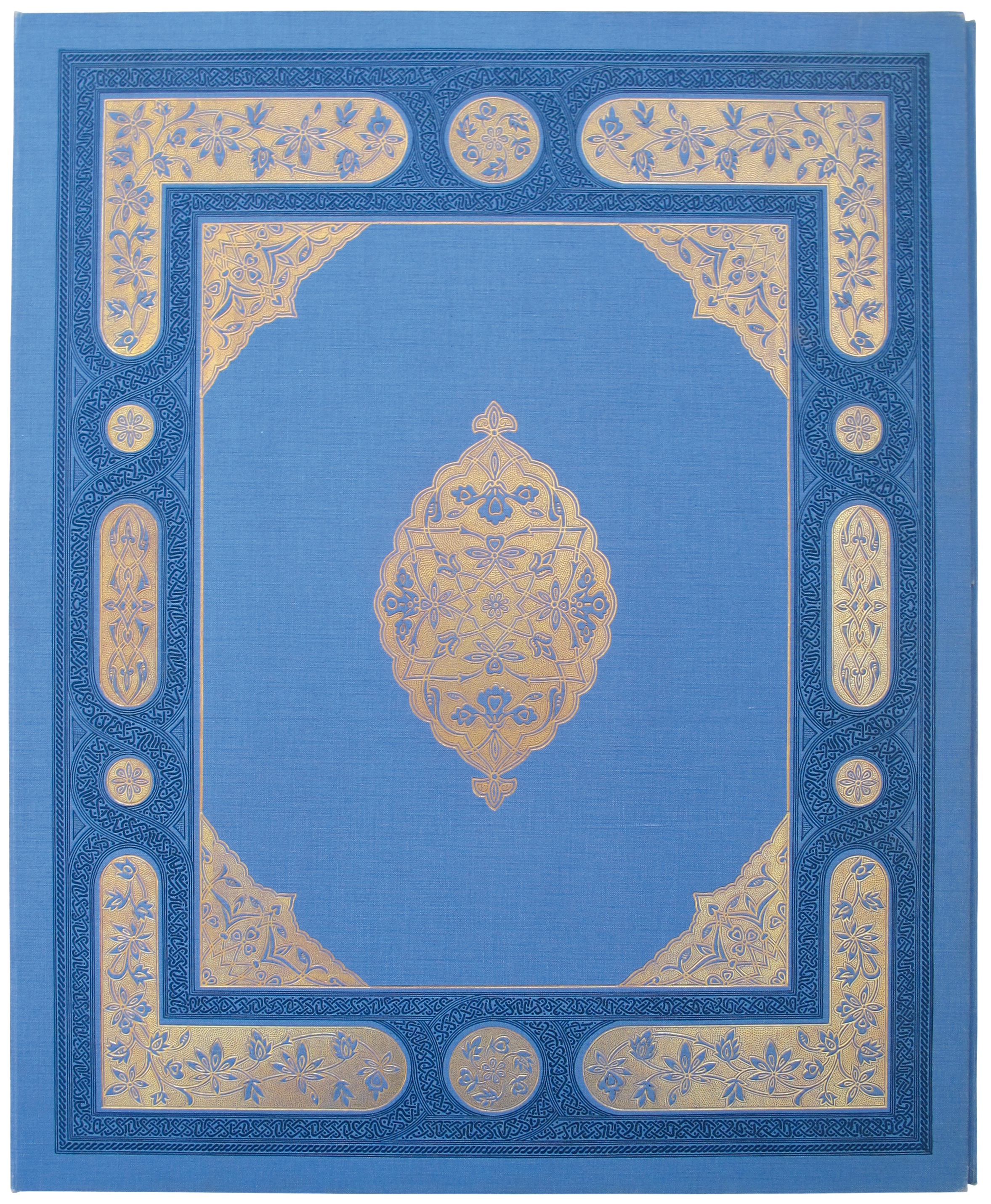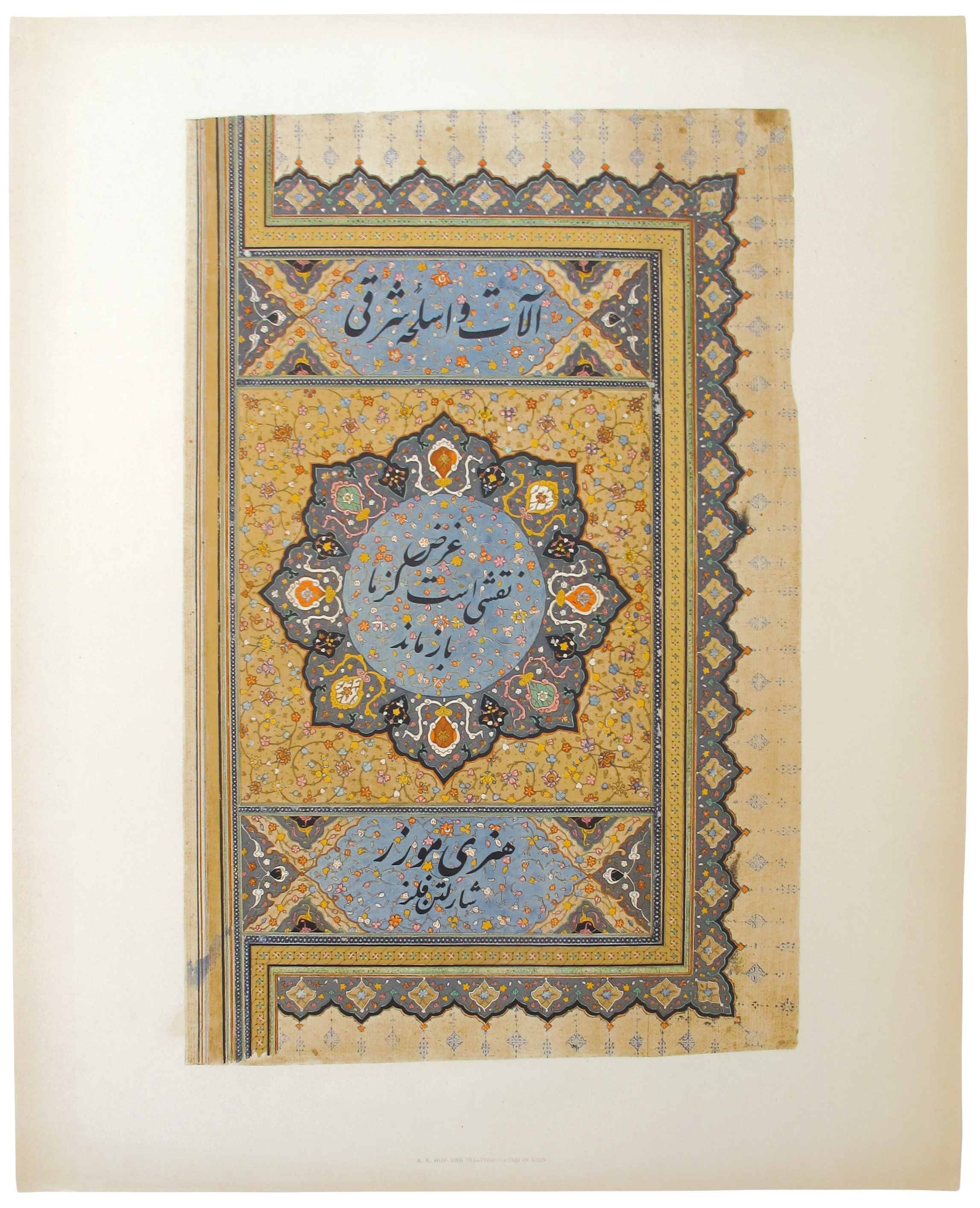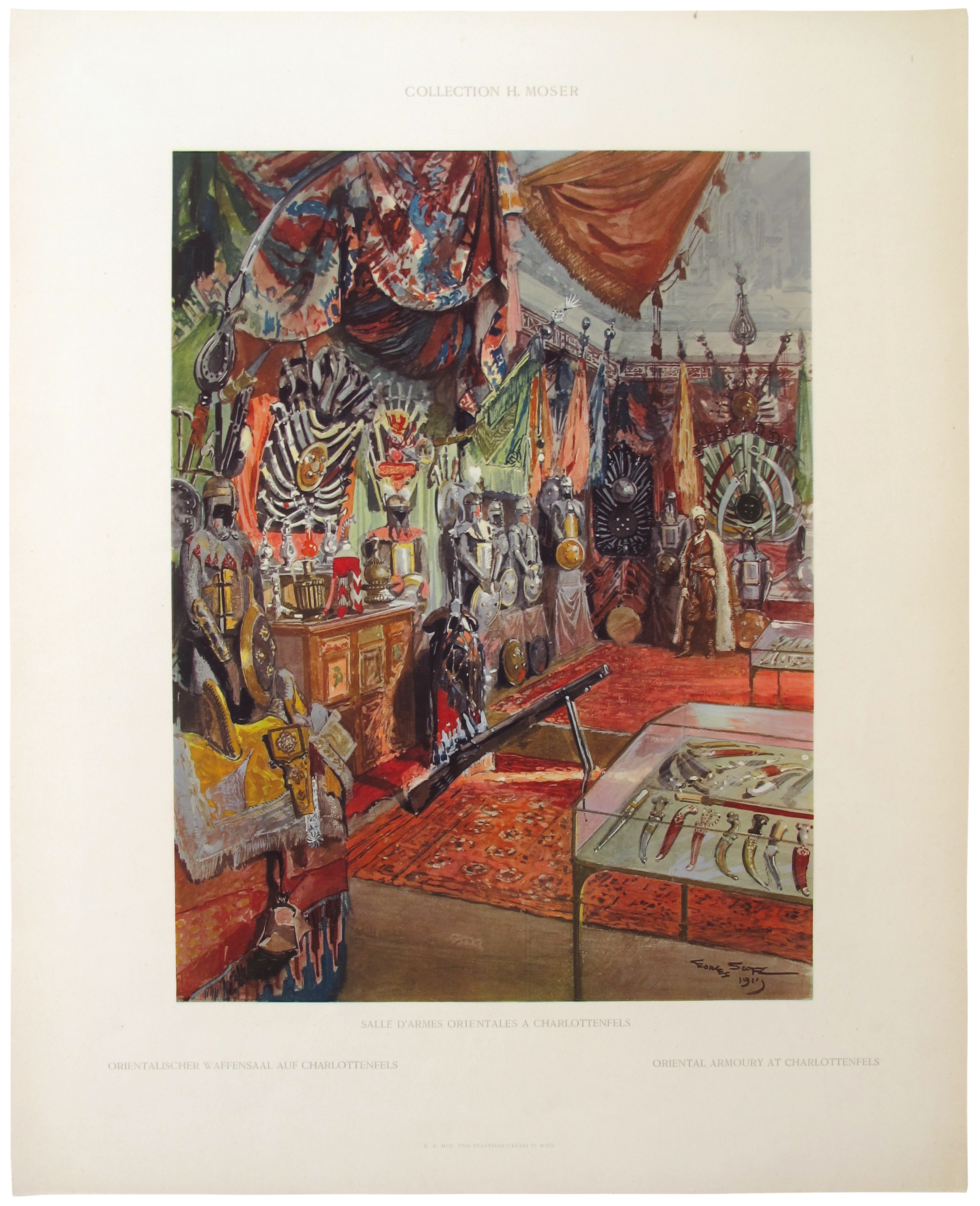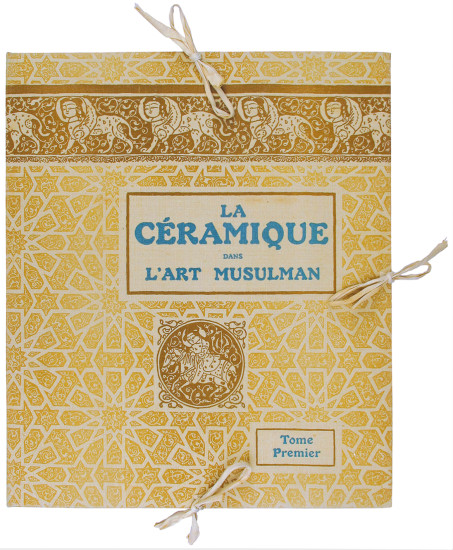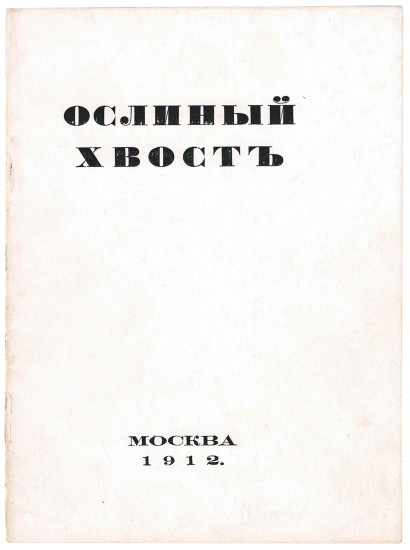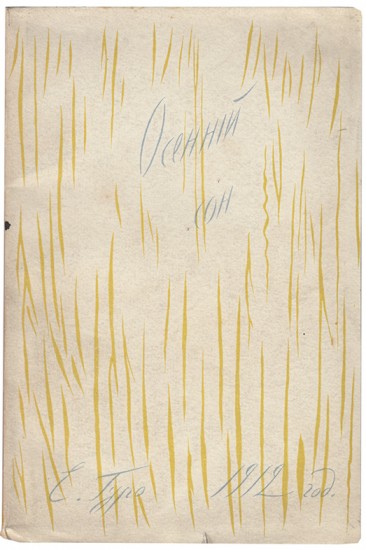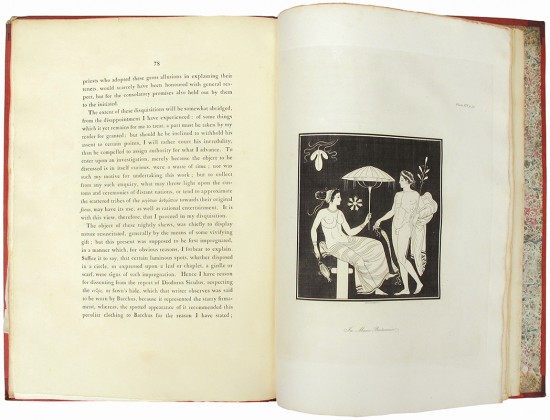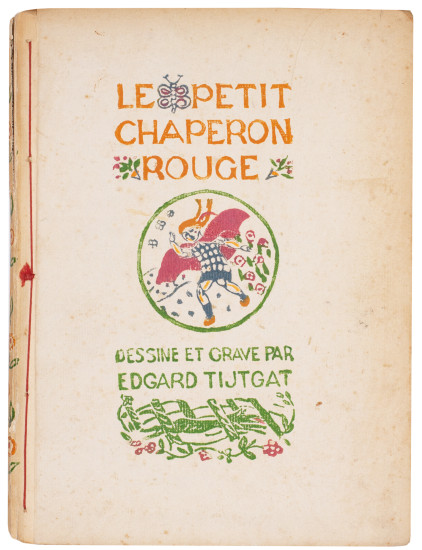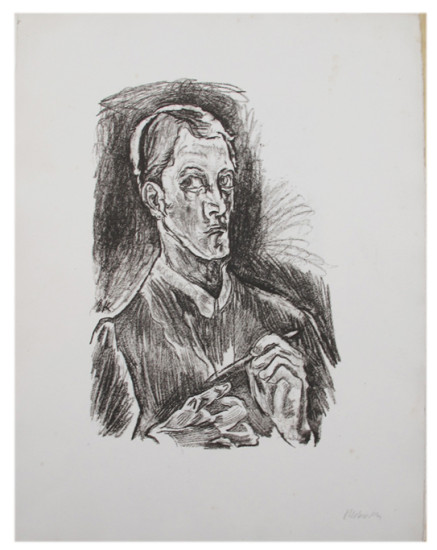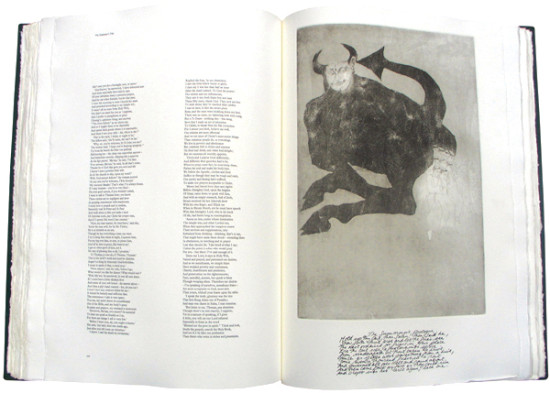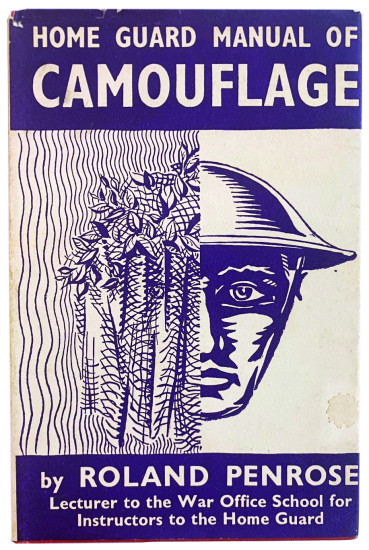Armes et Armures Orientales. Collection Henri Moser-Charlottenfels
Moser, Henri
Leipzig. Karl W. Hiersemann. 1912
An outstanding copy of Henri Moser's catalogue with the portfolio in pristine condition and preserved in the scarce original wooden box.
From the edition limited to 300 numbered copies, with this one of 100 copies in French; a further 125 copies were issued in German together with 75 in English.
Moser began this collection, when as a young lieutenant he left Russia in 1868, during the conquest of Turkestan, 'the Siberia of the dandies of the Guard'. He relates that at the time he used to swap blades for bottles of vodka that he was offered the choice between a turquoise harness and the Quran from the Bibi Khana of Samarkand, reputed to have been written by Ali himself. Needless to say, Moser chose the harness and watched as the Quran was consigned to the Imperial Library; the Amir of Bukhara reputedly offered 400,000 roubles for the manuscript.
By 1886, Moser's collection was being exhibited at the International Congress at Geneva. The collection grew with visits to Bukhara, Khiva, Kashgar and Afghanistan. Moser was acquainted with all the notables of the era, from Yakoub Beg of Kashgar to Abdour-Rahman Khan, the future Amir of Afghanistan, and his collection swelled with their gifts. Later, Moser devoted himself to the classification and analysis of the processes of manufacture of these arms, and greatly added to the scholarship on the subject. In this work he presents part of his collection in order to 'make known to others what my travels, researches and studies have taught me concerning these same weapons'. (Preface).
As noted above, the portfolio for this copy is remarkably well preserved, protected by the original wooden box. We trace only a single copy at auction (in 1986) and that held at the University of Utrecht that retain the original box.
From the edition limited to 300 numbered copies, with this one of 100 copies in French; a further 125 copies were issued in German together with 75 in English.
Moser began this collection, when as a young lieutenant he left Russia in 1868, during the conquest of Turkestan, 'the Siberia of the dandies of the Guard'. He relates that at the time he used to swap blades for bottles of vodka that he was offered the choice between a turquoise harness and the Quran from the Bibi Khana of Samarkand, reputed to have been written by Ali himself. Needless to say, Moser chose the harness and watched as the Quran was consigned to the Imperial Library; the Amir of Bukhara reputedly offered 400,000 roubles for the manuscript.
By 1886, Moser's collection was being exhibited at the International Congress at Geneva. The collection grew with visits to Bukhara, Khiva, Kashgar and Afghanistan. Moser was acquainted with all the notables of the era, from Yakoub Beg of Kashgar to Abdour-Rahman Khan, the future Amir of Afghanistan, and his collection swelled with their gifts. Later, Moser devoted himself to the classification and analysis of the processes of manufacture of these arms, and greatly added to the scholarship on the subject. In this work he presents part of his collection in order to 'make known to others what my travels, researches and studies have taught me concerning these same weapons'. (Preface).
As noted above, the portfolio for this copy is remarkably well preserved, protected by the original wooden box. We trace only a single copy at auction (in 1986) and that held at the University of Utrecht that retain the original box.
[9 leaves of text + 45 leaves of plates; pp. xvii, (i)]. Folio. (532 x 428 mm). Title in French and Persian with justification verso, two leaves with 'Avant-Propos' with monochrome head-piece (a landscape featuring Charlottenfels) and monochrome reproduction photographic portrait of Moser, details of transcription by Huart, list of plates and explanation of the plates (stitched a sissued in the text booklet) and 45 plates numbered I - XLV at upper right, including 7 chromolithographs, 35 monochrome plates and 3 coloured plates, each with title in French, English and German; one of the chromolithographs, of an illuminated manuscript title page, is unnumbered and uncalled for in the list of plates. Loose as issued in original blue cloth portfolio with flaps (the interior lined with a colour reproduction of xxx), the portfolio with elaborate decorative tooling in gilt in the Islamic manner, loose in original hinged wooden box (564 x 458 mm) with clasp, canvas labels with title and publication details in white to front cover and spine.
#48516

